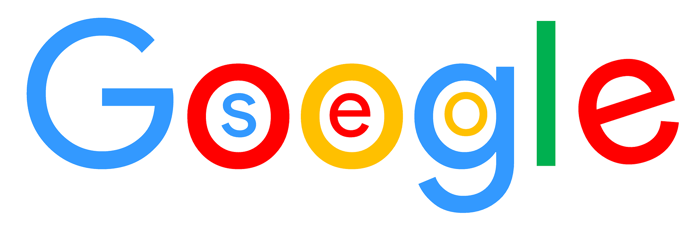To explain things simply, we can consider that the SEO gathers the techniques to to "please" the search engine robots while the UX (User experience) aims to to "please" humans who surf the web.
So are UX and SEO antagonistic? Not anymore!
What is user experience and why does it have so much impact on your website's SEO?

"UX and SEO are like chocolate and whisky. It's much better together!"
(Rand Fishkin, founder of Moz)
The days when a website could be favorably indexed by search engines with the simple integration of a few keywords within the content, are now over.
The evolution of tools, particularly thanks to Machine Learning, has made old SEO tactics all but obsolete. Other, more relevant factors can now be used to judge the quality of a website: the UX (user experience) is one of them.
UX, at the heart of Google's algorithms
Google's stated goal is to provide personalized search results in the fastest and easiest way for the user.
The Mountain View firm has been working for years on optimizing its own user experience and now pays attention to what users think of a website.

User experience or UX is therefore now central to how Google values your website and therefore your SEO strategy.
Concretely, an indexed website that does not make it easy for users to access the information they are looking for will be penalized by Google.
The questions to ask and the UX factors to identify
In order to progressively improve the UX and reach the standards defined by Google it is important to ask ourselves some simple questions, putting ourselves in the shoes of the user:
- Is it easy to contact you?
- Is the load time of the website optimal?
- Is it obvious to users to understand what you are offering?
- Is your offering easy to access?
- Does your website look professional? Is it visually pleasant for the user?
- Is the navigation of the website pleasant for the user?
- Can visitors find intuitively the information they are looking for?
- Are you speaking directly to users by focusing on their needs?
- Are your images unique? Do they truly reflect what you offer?
- Do you incorporate a CTA to direct users to the answer to their needs?
- Do you often answer questions asked by visitors?
- Can users get focused accurately on any of the topics you cover?
Although Google's algorithms are not known in detail, some factors could be identified.
In particular, we know that Google takes into account the bounce rate and the number of page views.
The headache of high bounce rate
A high bounce rate means that users have overwhelmingly left your site after reading an indexed page.
And then you think:
"Thanks to my great site design, the user easily finds the information they were looking for and then leaves. And that's proof positive that my content AND my UX are quality!"
And that might be accurate! A bounce rate, by the way, is never a relevant KPI taken independently. It has to be put in relation to other metrics (and Google knows this).
However, there's a good chance that this high bounce rate reveals a UX problem.
This may mean that, despite the response you could have provided to a user, a problem exists on the page that does not encourage the user to continue searching.
It could be a layout flaw, scripts or interruptive ads that are holding users back.

Pop-up ads hurt your UX
The problem can also be related to poor site design, bad color combination, too long loading times or even the presence of spelling mistakes.
A bounce rate that is too high is a priori worrying for your website users but also for Google, which will consider that your website does not quickly lead to user satisfaction and will rank it unfavorably in the search results.
Even in the scenario discussed at the beginning of this paragraph, Google will consider that you have not done enough to encourage your visitor to find more information on your site, for example with internal links, and therefore, that you deserve a penalty.
Tough!!
The number of page views per visit
The number of page views per visit is an excellent indicator of user experience! The higher this number the more it means that users found the site easy to use and the content relevant and responsive to their needs.
This KPI goes hand in hand with time spent on the site.
As with bounce rate, this metric is simple for Google to identify and speaks volumes about your consideration of visitor comfort.
Of course, search engine algorithms incorporate dozens of other metrics, which would be too long - if not impossible - to describe here.
4 simple solutions to optimize your website's UX
1 - Speed up website loading times
A user faced with a site that takes forever to load quickly loses patience and is more likely to browse a website similar to yours.
Improving loading speed is then crucial since Google has integrated this factor in its algorithms.
2 - Provide interactive content and elements
Users are always looking for more innovative and enjoyable experiences on the web.
The modern user is particularly attracted to interactive content because it involves the user in a relationship with the company.
In addition to visual content, incorporating a quiz, contest or interactive infographics will increase the time spent on the site of the latter.
Do not limit yourself to the usual static textual content then creates a better experience and consequently increases the time spent on the site, a factor retained by Google for SEO.
Integrating interactive content doesn't mean putting usual content in the background.
The user first searches for information that meets their needs. Finding the right balance between interactivity and content relevance makes it easy to engage users and therefore increase time spent on the website.
Other interactive elements can be integrated into the website to enhance the user experience. A Chatbot for example is a plus for the user and the company.
3 - Ensure responsive and design
With the development of the mobile internet and the evolution of consumer behavior, the responsive aspect of a site is essential. Ensuring a pleasant navigation and simplified access to all site information on all media is highly appreciated by users.
This allows the user not to lose patience when browsing on their smartphone and therefore improves your SEO.
The "Mobile-first Index" from Google will make its full-scale debut in 2018.
Your mobile site will then be considered by Google as your primary site. The responsive design will then no longer be important but determining for your SEO.

First impressions are key
4 - Create a network of relevant links
Integrating relevant links into the content present on your website serves different interests.
First of all it allows the user to go further into your content and find the information they are looking for if it is less accessible, less visible.
In addition, driving the user to browse all over your site and directing them to their needs reduces bounce rate and increases the time spent on the site as well as the number of pages per visit.
Creating a smart network of links allows you to better guide the user and send Google, strong signals that show your desire to improve the UX of your website.
For Google as well as for you, SEO and UX have never been so linked.
From now on, it's no longer a question of choosing between "pleasing" robots and "pleasing" humans: please your fellow man!








